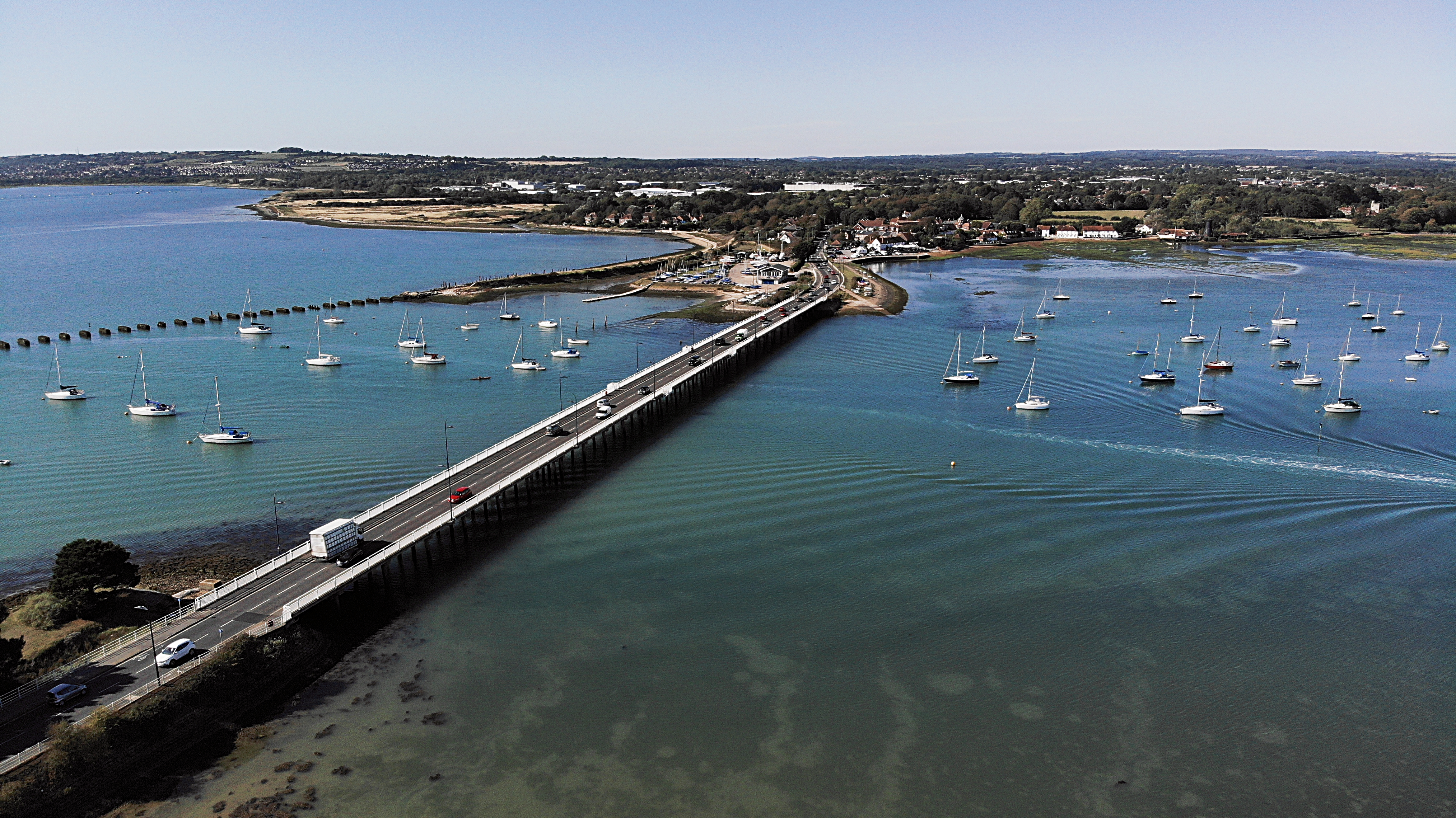Langstone Bridge on:
[Wikipedia]
[Google]
[Amazon]

 Langstone Bridge (also known as Hayling Bridge) connects
Langstone Bridge (also known as Hayling Bridge) connects

Hayling Island
Hayling Island is an island off the south coast of England, in the borough of Havant in the county of Hampshire, east of Portsmouth.
History
An Iron Age shrine in the north of Hayling Island, later developed into a Roman temple in the 1st cent ...
with the English mainland of Hampshire
Hampshire (, ; abbreviated to Hants.) is a Ceremonial counties of England, ceremonial county in South East England. It is bordered by Berkshire to the north, Surrey and West Sussex to the east, the Isle of Wight across the Solent to the south, ...
.
The name of the bridge is derived from its location at the coastal village of Langstone.
Historically connection was by a causeway known as the Wadeway; this was severed by the construction of the Portsmouth and Arundel Canal
The Portsmouth and Arundel Canal was a canal in the south of England that ran between Portsmouth and Ford in the Arundel district. It was built in 1823 but was never a financial success and was abandoned in 1855; the company was wound up in 1888 ...
.
Wadeway
The Wadeway or Wade Way is an original and historic causeway toHayling Island
Hayling Island is an island off the south coast of England, in the borough of Havant in the county of Hampshire, east of Portsmouth.
History
An Iron Age shrine in the north of Hayling Island, later developed into a Roman temple in the 1st cent ...
; however, it is now impassable, having been cut in two by a deep channel for the Portsmouth and Chichester Canal in the 1820s. It was classified as a bridleway in 1988, and is shown as such on modern Ordnance Survey maps in spite of its use being considered hazardous at best. Excavation of this feature in 2006, constructed on a natural high point in the harbour, put its date in the Roman to medieval range but found no evidence to be more specific.
Wooden bridge
The canal company funded a replacement wooden road bridge served by a toll-house situated at the northern end. There was a weight limit and after World War 2 only single-decker buses were allowed across; if they were carrying too many passengers some had to get out and walk, regardless of the weather, to reduce axle-weight. The old wooden bridge was demolished following construction of a concrete bridge in the late 1950s.The 1956 bridge
A replacement concrete bridge opened in 1956, initially still as a toll bridge. The new bridge is owned byHampshire County Council
Hampshire County Council (HCC) is the upper-tier local authority for the non-metropolitan county of Hampshire in England. The council was created in 1889. The county council provides county-level services to eleven of the thirteen districts geo ...
and was operated without tolls from April 1960. The construction work on the new bridge was carried out by Christiani and Nielsen.
Railway bridge
A railway bridge was constructed for the Hayling Island branch line in the 1860s. This became disused after the railway's closure and the remains survive to the west of the current bridge.References
Bridges in Hampshire Former toll bridges in England Hayling Island {{UK-bridge-struct-stub